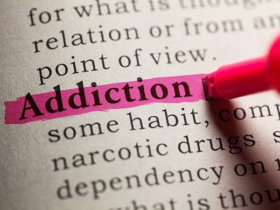Have you ever noticed that the color of your eyes changes with your mood? It’s not just something you imagined; it really happens! Although eye color is primarily determined by genetics, there are certain environmental factors and health conditions that can cause the pigmentation in your eyes to change. In this article, we’ll discuss how eye color can change with your mood, what causes this phenomenon, and why it’s important to be aware of it. Ready to learn more? Let’s dive in!
How do mood and color change affect the eyes?
Mood and color change can affect the eyes in a number of ways. For instance, if you are feeling sad, your eyes may appear to be darker in color. Conversely, if you are feeling happy, your eyes may appear lighter in color. Additionally, the pupil size can also change with mood and emotion. For example, if you are feeling scared or nervous, your pupils may dilate (enlarge) in order to take in more light.
Mood and color change can affect the eyes in a number of ways. For example, when someone is angry, their eyes may appear to be more red than usual. This is due to the increased blood flow to the head and face that occurs when someone is experiencing negative emotions. Similarly, when someone is happy or excited, their pupils may dilate in order to take in more light and information. This helps them to process information more quickly and effectively.
In addition to emotional states, changes in lighting can also affect the eyes. For example, when walking from a brightly lit area into a dark room, the pupils will need to adjust in order to allow less light into the eye. This can take a few moments and may cause some discomfort. However, once the pupil has adjusted, vision should return to normal.
Read More : Sanpaku Eyes
What are the benefits of mood and color changing eyes?
When it comes to colors and moods, it’s often said that certain colors can affect our emotions. For example, the color red is often associated with anger or excitement, while the color blue is often associated with calm or sadness. But what about our eyes? Can the color of our eyes change with our moods?
It turns out that the answer is yes! Our eyes can actually change color depending on our current emotional state. If we’re feeling happy or excited, our eyes will often take on a more greenish hue. If we’re feeling sad or anxious, our eyes will often appear more blue or grey.
So why does this happen? It all has to do with the way that light reflects off of our eyes. When we’re feeling positive emotions, the blood vessels in our eyes dilate and allow more light to enter. This makes the green areas of our irises appear brighter and more pronounced. When we’re feeling negative emotions, however, those same blood vessels constrict and don’t allow as much light in. This makes the darker areas of our irises appear more prominent and gives us that “blue” or “grey” look.
Interestingly, this effect isn’t just limited to human beings. Studies have shown that dogs and cats also experience changes in eye color based on their moods!
Are there any risks associated with mood and color changing eyes?
Yes, there are some risks associated with mood and color changing eyes. If you experience any of the following symptoms, you should see an eye doctor immediately:
-sudden onset of extremely red or yellow eyes
-pain or discomfort in the eyes
-blurry vision
-sensitivity to light
-floaters or flashes of light in the vision
There are a few risks associated with mood and color changing eyes. If you have light colored eyes, they may become more sensitive to light and possibly experience some discomfort. Additionally, if you have dark colored eyes, the pigment in your iris could begin to break down, causing your eyes to change color. While these changes are usually temporary and will not cause any long-term damage, it is important to be aware of the potential risks before making any decisions about changing your eye color.
Read More : Sanpaku Eyes
How do you change your eye color with mood or color changes?
Most people’s eyes stay the same color throughout their lives, but there are exceptions. A small number of people have eyes that change color with their mood or the temperature of their surroundings. This rare condition is called chameleons, and it occurs when the cells in the iris (the colored part of the eye) contain more than one type of pigment.
Chameleons can be caused by a variety of genetic conditions, but it is not known why some people develop this condition while others do not. People with chameleons may find that their eyes change color in response to emotions like anger or happiness, or they may notice that their eyes change color when they are in a different environment, such as when they step outside into the cold.
While there is no cure for chameleons, people who have this condition can learn to control their eye color by managing their emotions and avoiding trigger environments. If you think you may have chameleons, speak to your doctor about ways to manage this condition.
Conclusion
In conclusion, it is possible for eyes to change color due to sudden shifts in one’s mood. However, this phenomenon can be easily explained by the presence of a certain eye pigment called melanin which is responsible for determining the color of our eyes. Thus, people should not be too alarmed if they observe changes in their own or someone else’s eye color as it could simply depend on the individual’s current mood and overall health condition.








